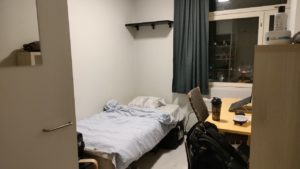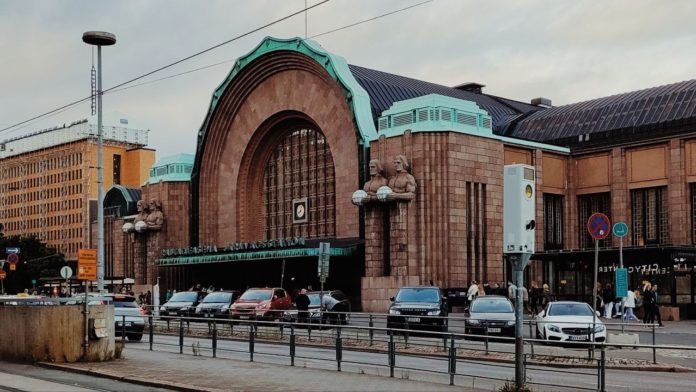Moi! (Hi!)
Being selected to be part of the Global Exchange Programme (GEXP) is a wonderful opportunity to experience new cultures, make new friends, and expand your horizon (literally)! But before diving into the thrills of overseas exchange, there is much to prepare physically, mentally and financially.
Here are some of the things that no one tells you but you have to prepare beforehand prior to your exchange, particularly if you are considering or have been selected to do your overseas exchange in Aalto University, Finland!
✈️ Flight ticket (S$1400 – S$2500)
The airfare from Singapore to Finland or Europe in general is going to cost, a lot. However, there are some ways to save on airfares! There are quite a few airlines operating flights to Finland such as Finnair, Qatar, Emirates and Singapore Airlines. However, to get a bang off your buck, try signing up for student membership offered by some of the more established airlines. Qatar Airways for instance, has the Student Privilege Club which offers 10% off your first booking. In addition, it provides you an additional 10kg of baggage allowance.
For my flight to Finland, I had a total of 40kg of checked-in baggage + 7kg carry-on allowance; a pretty generous weight limit to pack up four months of exchange essentials. In addition, try to book flights during off-peak seasons and avoid flying during the weekends. In total, my two-way flight on Qatar Airways Economy class cost just under S$1600.

🏡 Housing (300€ – 500€/month)
Housing in Finland, particularly in Helsinki, is not particularly cheap. Housing can be primarily sourced from three places. First, HOAS (Foundation for Student Housing in the Helsinki Region), AYY (Aalto University Student Union), and lastly but most expensively, the private property market. I would focus on the first two options, which is where most exchange students would live. Housing by AYY (https://domo.ayy.fi/) is on-campus in Espoo and it is usually the cheaper option, costing about (250€ – 450€/month). However, most AYY housing is occupied by current Aalto undergraduates and most exchange students are put on a waiting list. Most AYY apartments are also unfurnished, which means you would have to source for your own utensils, beddings etc.

In comparison HOAS apartments (https://hoas.fi/en/) are fully furnished, but cost more (350€ – 600€/month) and is easier to get. According to HOAS, over 950 apartments are provided for exchange students located mostly within Helsinki city centre, Espoo, and the greater Helsinki region. Good news is that most apartments have public transportation and commuting to Aalto can be done in under an hour. Moreover, being located near the city makes it more convenient for a weekend getaway to explore all that Helsinki has to offer!
My apartment costs over 400€/month and is located one train stop from the city centre. However, it is comparatively smaller (just 10m2) than what others pay for the same price at a location further from the city. Nonetheless, it is still bigger than SUTD hostel’s single room so that’s a big plus, oops.
🏥 Insurance (S$400 – S$500; depending on duration of travel)
Travelling into Finland requires you to have a valid insurance policy covering at least 120,000€ in medical expenses. This is also a compulsory requirement when applying for your Finnish residence permit (visa). For simplicity, get the compulsory student insurance offered by SUTD. Many of us were unaware that SUTD travel insurance was compulsory and had bought our own private travel insurance. However, the SUTD student insurance coverage is sufficient. Insurance premium also depends on the number of days abroad. So if you are intending to travel overseas after the term ends or before the term starts, be prepared to pay more or make alternate insurance plans.
🆔 Residence Permit (300€)
As you are staying in Finland for over 90 days, you need to get a Finnish residence permit. However, do note that you should only do this upon receiving the acceptance letter from Aalto University and having settled your insurance. This is usually done by filling up an online application form by the Finnish Immigration Service, before heading down to the Finnish Embassy in Singapore to get your biometrics scanned, and finally collecting your Finnish Identity Card (P.S., it makes an awesome momento).
📔 Study Plan (Free!, but it takes time)
Aalto courses are revised every two years. This means that course syllabus remains unchanged for two years, and may be discontinued after two years. The courses run from 2022-2023, 2024-2025, etc. This is something that many of us who were selected for Aalto University did not realise and that messed up many of our study plans, since some of our initially indicated courses were not offered. To search for course availability, you can log in via guest access via Sisu (https://sisu.aalto.fi) and Aalto’s Mycourses (https://mycourses.aalto.fi/). Make sure to filter to the specific curriculum periods!
In general, Aalto’s study curriculum is split into 2 semesters: Fall (Period I and II) and Spring (Periods III, IV and V). Each period is 6 weeks long, followed by 1 or 2 intensive weeks. Intensive week is where course evaluation or examinations are held. But if you are lucky to take courses without an exam, your intensive weeks can double up as your recess week as it did for some of us (more on that next time hehe).
Course selection for your preliminary study plan may take up some time in Term 4 and 5, but the time invested is worth it. Unlike SUTD, Aalto offers a wide range of courses which may lead to a choice paralysis! However, it also made me more aware of which courses I am interested in. As a guideline, you have to take at least two-thirds of your courses from a single faculty, and have the freedom to select the remaining one-third of courses from other faculties. Aalto recommends taking 30 credits, or the equivalent of six 5 credit courses. Do note that it is not mandatory to take 30 credits! 30 credits is just a recommendation since Aalto undergraduates need to clear 60 credits per academic year. However, most students take less subjects between 4-5 courses, or 20-25 credits in Autumn (12 weeks) and more subjects between 25-35 credits during Spring (18 weeks) as there is simply more time to take up these courses.
TIP: If you are a prospective ESD student flying over to Aalto, you are more fluid in choosing your main faculty depending on your interest. Interestingly, our batch has ESD folks enrolled in Science (Computer Science), Electrical Engineering, Industrial Engineering, and Civil Engineering. Unfortunately, many Business courses are not available.
🧳 Luggage (pack what you need, need what you pack)
Pack clothes smartly! Autumn temperatures in Helsinki range between +5 to +15 degree Celsius, and can drop to zero or sub-zero in December. At the time of writing in October, mean daily temperatures are about +6 degrees Celsius. Learn the art of layering too, and I recommend joining SUTD Mountaineering’s Layering Course to learn about economical layering techniques for cold weather. Oh, and there is no need to bring utensils as HOAS apartments provides them. Finally, pack some comfort food, as we are bound to miss home :’)
TIP: If you realise you are lacking items in Finland itself, you can buy them cheaply off second-hand stores or through Otaniemi buy/sell: a student-run buy-sell group on Telegram similar to Carousell (@aaltomarketplace).

💳 Cash and expenses (Varying depending on personal spending habits)
Finland accepts both cash and card, but I would recommend going cashless for most parts. Currency exchange providers such as YouTrip and Revolut are good choices! Personal expenses generally depends on the individual’s lifestyle, but a decent meal in Finland costs between 12€-20€. Frankly, you are better off either home-cooking or eating at Kela student-discounted canteens located at university campuses which serves meals for only 3.20€
P.S., Kela meal prices rose from 2.70€ to 3.20€ in October 2022 to cope with rising food and service costs, but it is expected to drop to 2.95€ come January 2023, due to co-funding by the government.

💯 Now you are all set for Finland!
I hope that this blog post was useful in helping you plan and prepare for your overseas exchange to Aalto University, Finland. As you can tell, going on exchange can get expensive if you are not careful! Spending close to S$5,000 just to get the necesserary expenses settled was something we did not expect. I was lucky to be able to self-fund the travel cost with the money saved by taking on part-time jobs. But do not let the huge start-up cost scare you away because GEXP truly is a once-in-a-lifetime opportunity. After all, “you can always make more money, but you only have a set number of days to make more memories”.
Finally, most of the academic-related information for Autumn exchange came during April, where you are likely being swamped with projects and finals preparation in Term 4. It is good to pace out your time and know that the efforts you put in now will make the overseas exchange experience a lot more fulfilling and smooth.

Kiitos (thank you in Finnish) and watch this space as our adventures in Finland is just getting started. Moi Moi!






























